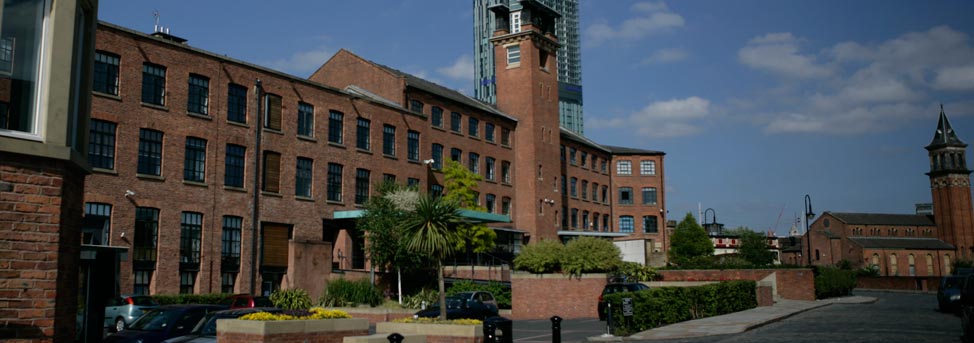In Greater Manchester
- How money from slavery made Greater Manchester
- The importance of cotton in north west England
- The Lancashire cotton famine
- Smoking, drinking and the British sweet tooth
- Black presence in Britain and north west England
- Resistance and campaigns for abolition
- The bicentenary of British abolition
Global
How did money from slavery help develop Greater Manchester?
Merchants' Warehouse, Castlefield, Manchester
Canal transport
Canals were an important factor in the expansion of Manchester during the Industrial Revolution. The Bridgewater Canal was the most important of the modern canals constructed. It was built initially to transport coal from the Duke of Bridgewater’s mines at Worsley to Manchester. The Manchester terminus was at Castlefield, the site of the original Roman settlement, and was opened by 1763.
Warehouse storage
The Castlefield basin was essentially a coal yard until the canal was extended to Runcorn in 1776, opening up trade with Liverpool. Large warehouses were built at Castlefield in response to the growth in trade. Raw cotton was to become one of the most important of the high value commodities carried on the canal, much of the cotton having been grown in slave plantations in the West Indies and, later, in the southern USA.
The first warehouse to be built at Castlefield was for the Duke of Bridgewater and it was located at the head of the basin, allowing direct access to Deansgate. Later warehouses included the Grocers’ Warehouse, Staffordshire Warehouse, Kenworthy Warehouse and the Merchants’ Warehouse. The majority of these were demolished in the 1900s but some have survived, including the Merchants’ Warehouse.
Merchants' Warehouse
This was erected in the late 1820s, by which date the design of canal warehouses was settled. The four-storey brick and timber warehouse was built directly on the side of the canal, and included two large shipping holes which allowed barges to enter the warehouse for the loading and off-loading of goods. Goods were transferred by means of a series of hoists. The Merchants’ Warehouse managed to escape demolition in the 1900s and it has been renovated in the redevelopment of Castlefield that began in the 1980s.
This information was provided by Terry Wyke.

